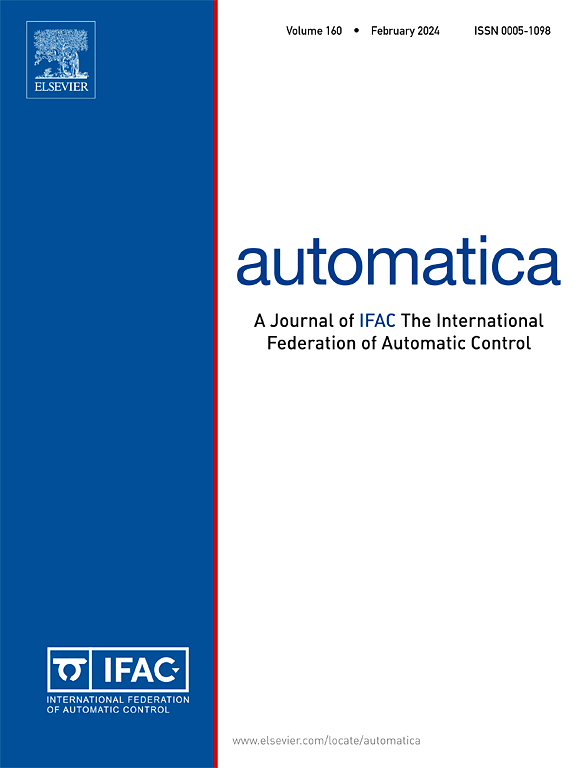群中的涌现同胚曲线
IF 4.8
2区 计算机科学
Q1 AUTOMATION & CONTROL SYSTEMS
引用次数: 0
摘要
我们提出了一种新的分散方法来产生智能体群中的紧急曲线轨迹。核心创新在于使用基于四元数的稳定嵌入,它允许应用线性控制策略来从局部观察产生全局稳定行为。利用双积分动力学将智能体建模为自由空间中的粒子。我们间接稳定了任意数量的智能体,通过将虚拟表示斜置到一个圆上,然后通过一组拓扑同胚产生精细的曲线轨迹。我们通过状态反馈、旋转和变量变化的组合,将这些虚拟代理表述为嵌入。结果是在期望的轨迹上形成均匀间隔的群体,每个智能体只需要关于其邻居状态的信息。仿真证明了蜂群在收敛到所需几何形状时的涌现特性。智能体保持分离并自动补偿群体中智能体的损失或增加。我们提供了嵌入、轨迹和控制器稳定性的数学证明。本文章由计算机程序翻译,如有差异,请以英文原文为准。
Emergent homeomorphic curves in swarms
We propose a new decentralized approach for producing emergent curve trajectories in swarms of agents. The central innovation lies in use of a quaternion-based stabilizing embedding, which permits the application of linear control policies to produce globally-stable behaviour from local observations. Agents are modelled as particles in free space using double integrator dynamics. We stabilize an arbitrary number of agents indirectly, through virtual representations bijected onto a circle, and then produce elaborate curve trajectories through a family of topological homeomorphisms. We formulate these virtual agents as embeddings, through a combination of state feedback, rotations, and variable changes. The result is evenly-spaced swarms along the desired trajectories, with each agent only requiring information about the state of its neighbours. Simulations demonstrate the emergent qualities of the swarm as it converges to the desired geometry. The agents maintain separation and automatically compensate for loss or addition of agents in the swarm. We provide mathematical proofs of stability for the embedding, trajectories, and controller.
求助全文
通过发布文献求助,成功后即可免费获取论文全文。
去求助
来源期刊

Automatica
工程技术-工程:电子与电气
CiteScore
10.70
自引率
7.80%
发文量
617
审稿时长
5 months
期刊介绍:
Automatica is a leading archival publication in the field of systems and control. The field encompasses today a broad set of areas and topics, and is thriving not only within itself but also in terms of its impact on other fields, such as communications, computers, biology, energy and economics. Since its inception in 1963, Automatica has kept abreast with the evolution of the field over the years, and has emerged as a leading publication driving the trends in the field.
After being founded in 1963, Automatica became a journal of the International Federation of Automatic Control (IFAC) in 1969. It features a characteristic blend of theoretical and applied papers of archival, lasting value, reporting cutting edge research results by authors across the globe. It features articles in distinct categories, including regular, brief and survey papers, technical communiqués, correspondence items, as well as reviews on published books of interest to the readership. It occasionally publishes special issues on emerging new topics or established mature topics of interest to a broad audience.
Automatica solicits original high-quality contributions in all the categories listed above, and in all areas of systems and control interpreted in a broad sense and evolving constantly. They may be submitted directly to a subject editor or to the Editor-in-Chief if not sure about the subject area. Editorial procedures in place assure careful, fair, and prompt handling of all submitted articles. Accepted papers appear in the journal in the shortest time feasible given production time constraints.
 求助内容:
求助内容: 应助结果提醒方式:
应助结果提醒方式:


